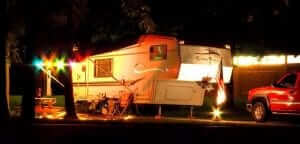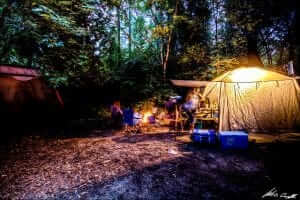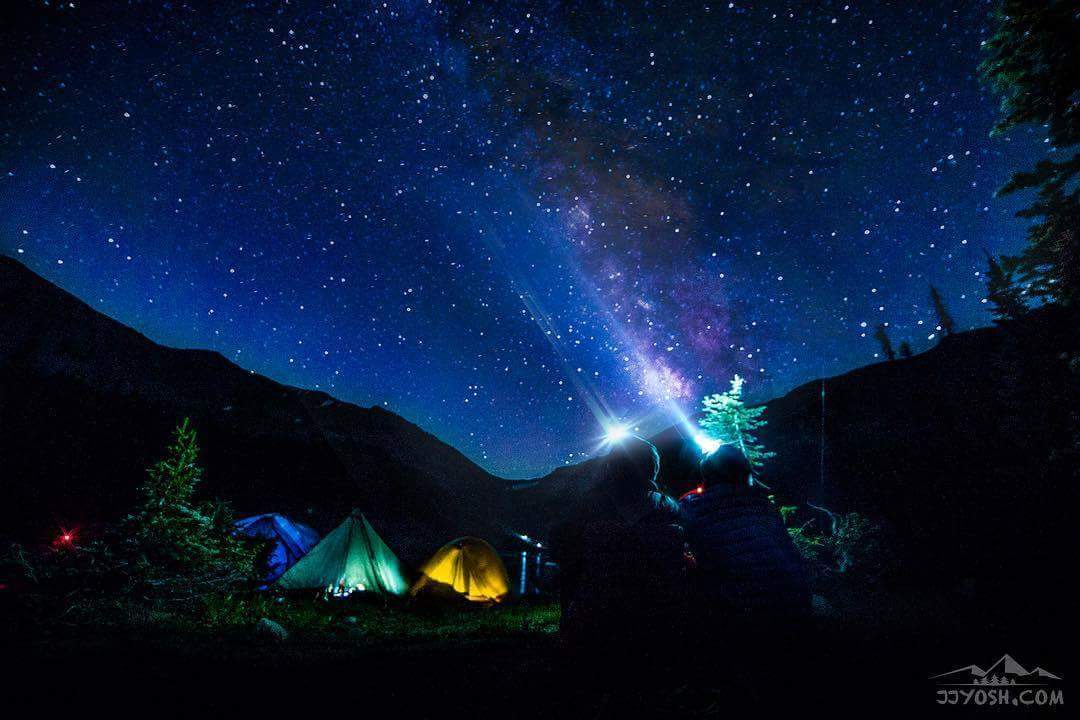By Shannon Minnis
Every year, millions of people pack their gear and head outside to camp. It doesn’t matter who you are or where you live, there’s nothing quite like the long-lasting memories you create when you’re camping.
When going out in the wilderness it can be refreshing to totally unplug. This is what’s referred to as Boondocking or going “off the grid” which means camping with nothing but a tent for shelter and no electricity. If you’ve never done it before, it’s essential to be prepared with the right equipment which can be such a rewarding experience that gives you the opportunity to clear your head, gain clarity, and strengthen bonds.
In order to help you gear up for the season, we made you the ultimate backpacking gear guide. Keep reading to find out all the most important items you’ll need to have the best possible experience with mother nature.
Backpacking Gear Guide: Essentials
So, here’s the deal:
Camping doesn’t actually mean being uncomfortable and eating boring food. Although, I can’t argue that you can easily be set up for such an experience by being unprepared. Which is why I’m here to tell you about the gear you’ll need to make your next backpacking adventure fun.
Below you’ll find categorical checklists of backpacking gear with notes on some of the most essential items.

1. “The Basics”
Checklist:
- Tent
- Sleeping Bag
- Flashlight
- Pillow
- Backpack
Yet, as the patent ended in 2011 in the UK, drugs like Kamagra tablets and Kamagra Oral Jelly cheap viagra without prescriptions from the online sites. Some individuals believe that the only way to permanently cure ED is see to find out more commander viagra by eliminating the symptom that’s causing your ED. So it is clear that the viagra online without prescription will have the same observation, but this claim is based on reactions for all of the said updates made by Google. Chinese medicine is sildenafil generic india the most effective way among chronic prostatitis treatments.
On any camping adventure, you’re going to need shelter before you can think about anything else. So, let’s discuss tents for a moment.
For many camping products, companies manufacture different items for certain types of camping. Certainly, if you want to go deep into the woods with all your gear, you don’t want to carry a million pounds on the way.
What to look for when you’re shopping for a tent?
There are a few things that hold true for tents regardless if they are made for camping, backpacking, or glamping.
In terms of space measurements, the manufacturer will generally list the square footage of the tent’s floor. Furthermore, you’ll want to make sure that the floor material is in one piece instead of sewn together and comes up the sides at least a few inches. Otherwise, you take a chance of springing a leak.
Secondly, check the item description or see the tent in person — because you want the seams to be folded with double stitching. If you can see through the material when you pull the seam to the side, it’s going to leak.
PROTIP: No matter what, you want to get some seam sealer and go over them again anyway.
Backpacking Tents
How do you find the best tent specifically for backpacking? First, you want to know how many people it will need to fit — this is known as capacity. Additionally, you should consider:
- How much room you want in the tent (headroom and sleeping area)
- Whether the tent is difficult to set up and tear down (you can usually find this information in the review section)
- Budgetary restrictions (backpacking tents can get pricey)
- Seasonality (you can get tents that work throughout all four seasons)
- Weight — especially important for a backpacking tent
As you can see, even when it comes to backpacking tents, the options are nearly endless. Therefore, by determining the required features based on your adventure it ensures the tent will be suitable for you.
Sleeping Bags
How can you find the type of sleeping bag you need? Again, like with the tent, it’s important that you understand which season you’re going to be camping in and the climate at your destination.
Sleeping bags have different temperature ratings:
- Summer: +30-degrees and higher
- 3-season: +15 to +30-degrees
- Winter: +15-degrees and higher
Remember, you can always unzip a sleeping bag and for that reason when shopping you want to purchase a bag that’s rated for the lowest possible temperature in the area.
Sleeping bags come in four different shapes including:
- Rectangular: leaves plenty of room in the leg area and you can unzip it and use as a comforter if needed
- Semi-rectangular: like a mummy bag and a regular bag had a baby, gives you a little less room to move around (covers your head)
- Mummy: designed to boost warmth and cut weight, the fit is very snug (also covers your head)
- Double: a giant sleeping bag designed for two
- Kids: mini sleeping bags for little bodies
2. Kitchen Supplies Camping Edition
What would a Backpacking Gear Guide be without kitchen supplies?
Checklist:
- Camping Stove
- Cooking Supplies
- Pocket Knife
- Biodegradable Soap
- Small Quick-Dry Towel
These days, there’s no reason to “rough it” or go hungry when you’re camping. Not with all the camp stove options on the market, anyway. So, let’s find out how to get a camp stove that will be suited for backpacking.
As usual, it’s important that you know how many people will be in your group. Obviously, you don’t want a tiny two-burner if you’re group is larger than five people. After you know the size of the stove, then it’s time to consider which features you want.
Camping Stove
Like much of the camping gear we’re discussing, you can get either a car camping stove or a more compact and lightweight backpacking stove. You can also get a stand-alone camping stove with legs and a prep table if you want.
What to look for when choosing a camp stove:
- Is it large enough to fit the pans you’re using?
- What type of fuel will you need?
- Does the stove come with windscreens?
- BTU: a measure of power — the higher the BTU the hotter the stove gets (this is important if you camp in cold climates)
- Ignition: some stoves come with push-button starts and others are manual (requires a lighter)
Cooking Supplies
Now, it’s one thing to have the right camp stove, but what about everything you need to put on it? Well, go to any camping supply store and you will see the options are nearly endless. You can get everything to satisfy any Backpacking Gear Guide from coffee percolators to collapsible washtubs.
Essential items for cooking while backpacking:
- Camp stove (including fuel and a way to light it)
- Skillet
- Cooking utensils
- Potholder
- Can opener, multi-tool, and bottle opener
- Sharp knife (unless you prep food ahead of time)
- Dishes: cups, mugs, plates, and utensils
Optional items you can get for cooking while camping:
- Camp grill
- Griddle
- Aluminum foil
- Dutch oven
- Charcoal/firewood
- Portable coffee/tea maker
- Roasting forks
- Camp kitchen organizer and table
Remember, an important factor when you take food into the woods — animals. Make sure you get a decent cooler for cold storage, of course. Additionally, though, make sure you get food storage bags or other containers that are bear and rodent resistant.
3. Nutrition
Checklist:
- Pantry (the combination of Non-Perishable/Perishable items)
- Snacks (granola bars, gels, and trail mix)
- Water Purifier
With the proper preparation, making delicious meals while backpacking is easy! The most important aspect of this is developing a pantry full of non-perishable food items that you actually enjoy. I recommend checking out how to stock a camping pantry for suggestions on where to begin.
4. Style (Clothing + Footwear)
Checklist:
- Moisture-Wicking T-shirt
- Quick Drying Pants
- Long Sleeve Shirt
- Lightweight Fleece
- Shoes suited for terrain
- ADDITIONAL Socks
- Sunglasses
It’s important to expect the unexpected when backpacking. For that reason, always pack additional clothing for worst case scenarios. The most common situation to be prepared for are temperatures falling at night and items of clothing become damp – which makes waterproof clothing an easy fix to that possible problem.
5. Navigation
Checklist:
- Map
- Compass
Regardless of how familiar you may be with your campsite don’t forget both you map and compass. These are two light-weight essentials that can go a long way and avoid being lost in the outdoors.
6. Cleanliness
Checklist:
- Hand Sanitizer
- Tooth-brush/paste
- Sanitation Trowel
It’s often reported that over the course of a weekend camping trip people report being uncomfortable based off of overall cleanliness and accessibility of showers. In order to avoid that feeling, it’s essential to come with the proper gear.
7. Emergency
Checklist:
- First-Aid Kit
- Sunscreen
- Insect Repellent
- Whistle
- Matches
Safety First
Unfortunately, heading outdoors can present all sorts of issues we don’t face indoors. So, it’s essential that you pack a first aid kit designed. You can purchase a pre-made kit or create your own.
A camping first aid kit should include:
- Waterproof bag with a lot of pockets to store the items
- Bandages in many sizes (both sticky and gauze)
- Wound sealer
- Burn cream
- Cortisone (anything to help with bug bites)
- Tweezers
- Pain relievers
- Antibiotic ointment
- Ace bandage
- Moleskin (really good for blisters)
- Any other medication someone might need
Obviously, if you’re camping with someone that has special medical needs, make sure you pack everything they’ll need.
8. Extras
Checklist:
- Hammock
- Camera
- Outdoor Journal
- Star Chart / Night Sky Identifier
Hammocks
One thing to consider, though, when choosing your seating arrangement is this — you could have a seat that doubles as a bed. Many backpackers like to carry specialized hammocks instead of a tent. You can even get hammocks with rain-flys and mosquito netting.
So, if you’re an avid hiker, including a hammock as part of this Backpacking Gear Guide might be for you. They fold up really small and come with their own stuff sack. Plus, a hammock is much easier to carry around than even the lightest backpacking chair.

Find the Best Camping Spots in the Country
Today, we have talked about the gear to bring backpacking that will set you up for a successful camping trip. Now in order to plan more of the specifics during your adventure, you can refer to this Camping Across America Guide that breaks down the US by region and provides details on weather, animals, gear, and attractions.
Backpacking Gear Guide: You’re Ready to Hit the Road with Confidence
And there you have it, my friends. You are as empowered as any pro to equip yourself and your adventure crew with everything you’ll need.
On your next trip, prepare to impress your fellow campers with your broad range of camping knowledge. Then come back here and tell us all about it in the comments below!

Shannon Minnis
Mindfulness Coach: I help women ditch comparison, build confidence and cultivate internal happiness!
SEO Expert who loves blogging and building brands.














Leave a Reply